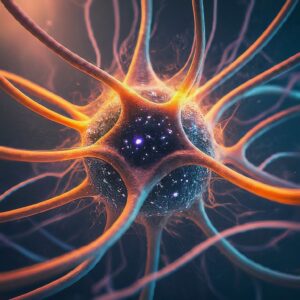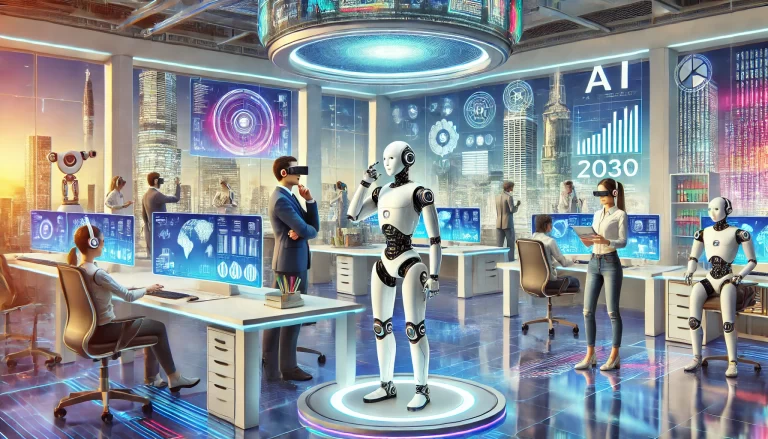Brain-Computer Interfaces (BCIs) are rapidly transforming the landscape of human-computer interaction. By creating a direct communication pathway between the brain and external devices, BCIs hold the potential to revolutionize numerous fields, from medicine to entertainment. This article delves into the fundamental aspects of BCIs, their current applications, and the future possibilities they present.
What are Brain-Computer Interfaces?
A Brain-Computer Interface (BCI) is a technology that enables direct communication between the brain and an external device. BCIs work by detecting and interpreting electrical signals generated by brain activity. These signals are then translated into commands that can control computers, robotic limbs, or other devices.
The core components of a BCI system include:
1. Signal Acquisition: Capturing brain signals using sensors placed on or inside the scalp.
2. Signal Processing: Filtering and amplifying the raw signals to extract meaningful patterns.
3. Feature Extraction: Identifying specific brain signal features that correspond to user intentions.
4. Translation Algorithm: Converting these features into actionable commands for external devices.
The Evolution of BCI Technology
The concept of BCIs dates back to the 1960s, but significant advancements have been made over the past few decades. Key milestones in BCI development include:
* 1970s-1980s: Early experiments demonstrated that animals could control devices using brain signals.
* 1990s: Development of non-invasive EEG-based BCIs for human use began, leading to early applications in communication and control.
* 2000s: Advances in neural signal processing and machine learning improved the accuracy and reliability of BCIs.
* 2010s-Present: Integration of artificial intelligence has further enhanced BCI capabilities, expanding their applications and usability.
Applications of BCIs
Medical and Therapeutic Uses
One of the most significant impacts of BCIs is in the medical field. BCIs are being used to:
- Restore Mobility: BCIs enable individuals with paralysis to control prosthetic limbs, wheelchairs, and other assistive devices through thought alone, offering new independence.
- Communication: For patients with severe communication impairments, BCIs can facilitate communication by translating brain signals into text or speech.
- Neurorehabilitation: Stroke patients and those with traumatic brain injuries can benefit from BCIs in rehabilitative therapies that promote neural recovery and motor function improvement.
Cognitive Enhancement
BCIs are also exploring the realm of cognitive enhancement, aiming to:
- Improve Memory and Learning: By interfacing directly with brain regions involved in memory and learning, BCIs could enhance cognitive functions, potentially benefiting individuals with cognitive impairments.
- Attention and Focus: BCIs can monitor and modulate brain activity to improve attention and focus, which can be beneficial in educational and professional settings.
Gaming and Entertainment
The gaming industry has embraced BCI technology to create immersive experiences:
- Mind-Controlled Games: Players can control game characters and elements using their thoughts, providing a unique and engaging experience.
- Virtual Reality (VR): BCIs can enhance VR experiences by enabling more natural and intuitive interactions within virtual environments.
Work and Productivity
BCIs have the potential to transform the workplace by:
- Hands-Free Control: Allowing workers to control machinery, computers, and other devices without physical contact, increasing efficiency and safety.
- Enhanced Collaboration: Enabling more immersive and interactive remote collaboration through virtual environments controlled by BCIs.
Challenges and Ethical Considerations
Despite the promising potential of BCIs, several challenges and ethical considerations must be addressed:
- Technical Limitations: Current BCI technology requires further advancements in signal acquisition, processing, and interpretation to improve accuracy and usability.
- Invasiveness: While non-invasive BCIs are less risky, they often provide lower signal quality compared to invasive methods. Balancing safety with effectiveness is crucial.
- Privacy and Security: The use of brain data raises significant privacy and security concerns. Ensuring that this sensitive information is protected is essential.
- Ethical Implications: The potential for cognitive enhancement and deep integration of BCIs into daily life poses ethical questions about autonomy, consent, and the potential for misuse.
The Future of BCIs
The future of BCIs holds exciting possibilities. As technology advances, BCIs could become more accessible, reliable, and integrated into various aspects of daily life. Potential future developments include:
- Neural Prosthetics: Highly functional and intuitive prosthetics controlled seamlessly by brain signals.
- Mental Health: Advanced BCIs could offer new treatments for mental health conditions by directly interacting with neural circuits involved in mood and cognition.
- Smart Environments: Homes and workplaces could be equipped with BCI-compatible devices, allowing users to control their environments with their thoughts.
Conclusion
Brain-Computer Interfaces represent a frontier in human-technology interaction, with the potential to revolutionize medicine, enhance cognitive abilities, transform entertainment, and improve productivity. While there are significant challenges and ethical considerations to address, the ongoing advancements in BCI technology promise a future where the boundaries between thought and action are increasingly blurred. As we continue to explore and develop BCIs, we stand on the brink of a new era where our brains can directly interface with the digital world, unlocking unprecedented opportunities for innovation and improvement in our lives.












